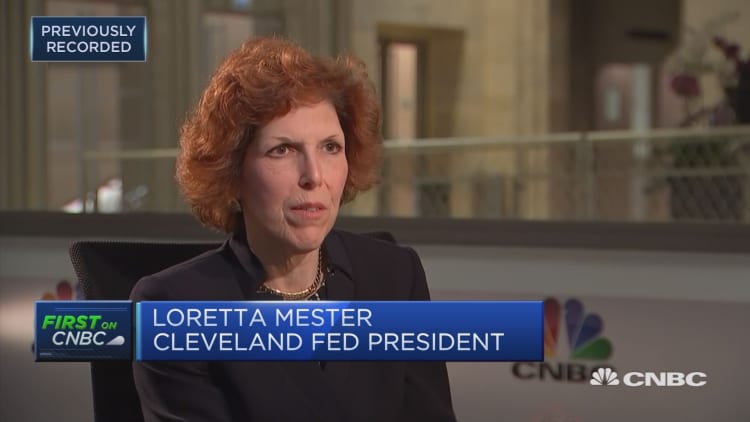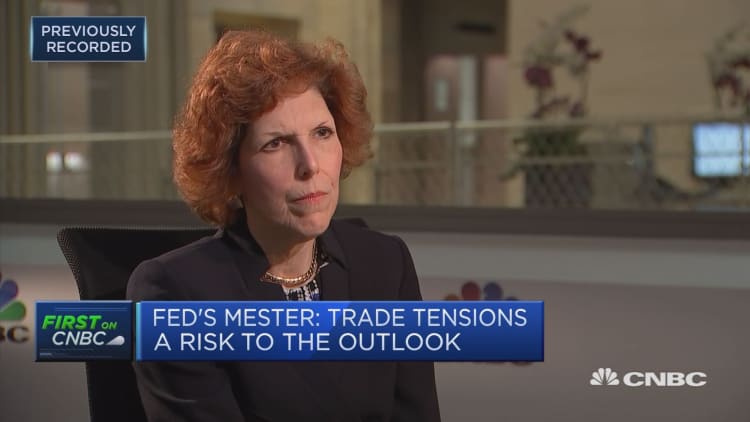
The U.S. should keep its debt-to-GDP (gross domestic product) in mind before things "get out of hand," Federal Reserve Bank of Cleveland President Loretta Mester said Monday.
Asked by CNBC's Joumanna Bercetche if she was worried about the outlook for rising U.S. debt, Mester was measured but encouraged monitoring the debt level, which is at its highest since just after World War Two.
"I think we have to be taking into account the health of U.S. economy, in terms of are we on a sustained fiscal path?" Mester replied. "And I do think that's something we should be thinking of now as we go forward, and not waiting till things get too far out of hand."
U.S. debt-to-GDP reached 104 percent in 2017, its highest level since 1946, when it hovered around 120 percent. Total U.S. debt has surpassed $21 trillion this year, a more than 120 percent increase from a decade ago.
Meanwhile, publicly-held U.S. debt-to-GDP — debt that the federal government owes to those outside the government — is 75 percent, but is expected to double by 2047, pushed upward by a raft of recent government spending and stimulus programs. The non-partisan Congressional Budget Office reported that a continuation of the current fiscal trajectory could take the current ratio up to 150 percent of GDP in 30 years, putting the U.S. in the same camp as Greece or Italy.
According to the International Monetary Fund, the U.S. is the only advanced economy where debt-to-GDP is scheduled to increase in the next five years.
Some government officials have pointed to this as a warning sign that could impact more than the economy. Earlier this year, National Intelligence Director Daniel Coats called rising debt a national security threat.
"The failure to address our long-term fiscal situation has increased the national debt to over $20 trillion and growing," Coats said during a Congressional hearing in February. "This situation is unsustainable as I think we all know, and represents a dire threat to our economic and national security."
Still, ratings agencies continue to show confidence in the U.S. economy, with Moody's and Fitch in April reiterating their AAA gold-standard rating for America's credit standing. They reason that even with Washington's growing debt pile, it has sufficient resources to retain its global reputation.
Global debt is at its highest level in history, with advanced economy debt far surpassing that of emerging market countries. Total debt levels globally came in at a record $164 trillion in 2016, amounting to 225 percent of the world economy's gross domestic product, according to the IMF's April Fiscal Monitor.
Average debt for advanced economies stood at 105 percent of GDP, while that for middle and low-income countries averaged between 40 and 50 percent.

—CNBC's Cheang Ming contributed to this report.


